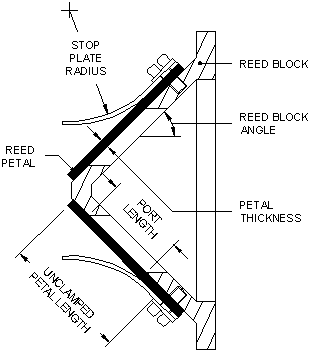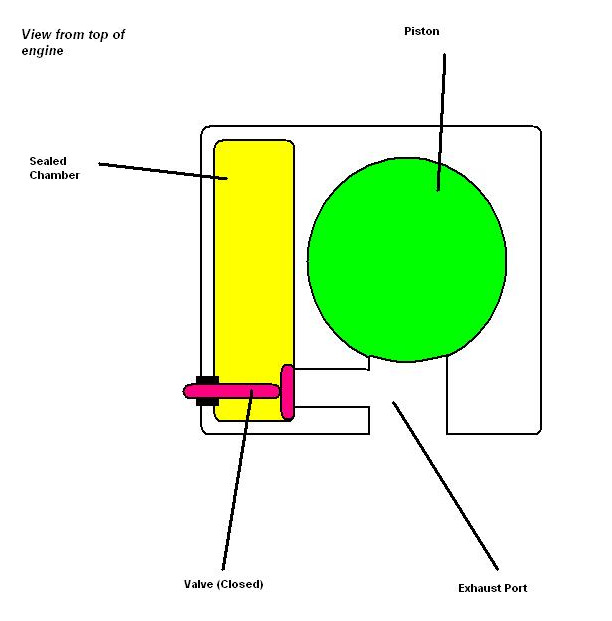|
Yamaha DT125
The Yamaha DT125 is a motorcycle produced by Yamaha Motor Company that was first launched in 1974 as the DT125A and is still sold in some markets to this day. The model designation DT indicates that it is a two-stroke, off-road-styled motorcycle, it has a raised exhaust, handlebars with cross members, universal tires, and adequate ground clearance for an off-road enduro motorcycle or trail motorcycle. The USA received the last DT125H in 1981. When first launched, the DT125 had a single-cylinder, air-cooled, two-stroke engine, a cradle-style tubular steel frame, conventional telescopic front forks and dual shock swingarm rear suspension, and drum brakes front and rear. Over the years the model received numerous updates and restyles, the dates and specifications of which vary between markets. Notable changes include the appearance of a single shock absorber rear swingarm in 1977, which Yamaha referred to as Mono-cross, or MX for short, a feature that appeared on many of Yamaha's ot ... [...More Info...] [...Related Items...] OR: [Wikipedia] [Google] [Baidu] |
Yamaha Motor Company
is a Japanese multinational manufacturer of motorcycles, marine products such as boats and outboard motors, and other motorized products. The company was established in 1955 upon separation from Yamaha Corporation (however, Yamaha Corporation is still the largest private company shareholder with 9.92%, as of 2019), and is headquartered in Iwata, Shizuoka, Japan. The company conducts development, production and marketing operations through 109 consolidated subsidiaries as of 2012. Led by Genichi Kawakami, the company's founder and first president, Yamaha Motor spun off from musical instrument manufacturer Yamaha Corporation in 1955 and began production of its first product, the YA-1 125cc motorcycle. It was quickly successful and won the 3rd Mount Fuji Ascent Race in its class. The company's products include motorcycles, scooters, motorized bicycles, boats, sail boats, personal water craft, swimming pools, utility boats, fishing boats, outboard motors, 4-wheel ATVs, recreat ... [...More Info...] [...Related Items...] OR: [Wikipedia] [Google] [Baidu] |
Enduro
Enduro is a form of motorcycle sport run on extended cross-country, off-road courses. Enduro consists of many different obstacles and challenges. The main type of enduro event, and the format to which the World Enduro Championship is run, is a time-card enduro, whereby a number of stages are raced in a time trial against the clock. Time-keeping enduros In a traditional time-keeping enduro, riders leave together in groups or rows, and each row starts at a certain minute. The object of the event is to arrive at pre-defined checkpoints according to a strict schedule. Early or late arrivals result in the riders' scores being penalized. Throughout a day there will also be allocated periods for refuelling and servicing the machine. Penalties apply for not meeting defined times or for outside-assistance when not permitted.Brief History of Enduro', Enduro 411, AMA Western Checkpoint Enduro Championship, retrieved 20 February 2012 Enduros and rallies There are two different types of ... [...More Info...] [...Related Items...] OR: [Wikipedia] [Google] [Baidu] |
Two-stroke Engine
A two-stroke (or two-stroke cycle) engine is a type of internal combustion engine that completes a power cycle with two strokes (up and down movements) of the piston during one power cycle, this power cycle being completed in one revolution of the crankshaft. A four-stroke engine requires four strokes of the piston to complete a power cycle during two crankshaft revolutions. In a two-stroke engine, the end of the combustion stroke and the beginning of the compression stroke happen simultaneously, with the intake and exhaust (or scavenging) functions occurring at the same time. Two-stroke engines often have a high power-to-weight ratio, power being available in a narrow range of rotational speeds called the power band. Two-stroke engines have fewer moving parts than four-stroke engines. History The first commercial two-stroke engine involving cylinder compression is attributed to Scottish engineer Dugald Clerk, who patented his design in 1881. However, unlike most later two-s ... [...More Info...] [...Related Items...] OR: [Wikipedia] [Google] [Baidu] |
Reed Valve
Reed valves are a type of check valve which restrict the flow of fluids to a single direction, opening and closing under changing pressure on each face. Modern versions often consist of flexible metal or composite materials (fiberglass or carbon fiber). Applications Traditional Reed valves, normally a leather flap covering a hole, are amongst the earliest form of automatic flow control for liquids and gases. They have been used for thousands of years in water pumps and for hundreds of years in bellows for high-temperature forges and musical instruments such as church organs and accordions. In nature, heart valves operate in a somewhat similar fashion. Pumps Reed valves are used in some reciprocating compressor designs, and in the pumping element of some musical instruments, large and small. Two-stroke engines Reed valves are commonly used in high-performance versions of the two-stroke engine, where they control the fuel-air mixture admitted to the cylinder. As the piston ri ... [...More Info...] [...Related Items...] OR: [Wikipedia] [Google] [Baidu] |
Motorcycle
A motorcycle (motorbike, bike, or trike (if three-wheeled)) is a two or three-wheeled motor vehicle steered by a handlebar. Motorcycle design varies greatly to suit a range of different purposes: long-distance travel, commuting, cruising, sport (including racing), and off-road riding. Motorcycling is riding a motorcycle and being involved in other related social activity such as joining a motorcycle club and attending motorcycle rallies. The 1885 Daimler Reitwagen made by Gottlieb Daimler and Wilhelm Maybach in Germany was the first internal combustion, petroleum-fueled motorcycle. In 1894, Hildebrand & Wolfmüller became the first series production motorcycle. Globally, motorcycles are comparably popular to cars as a method of transport. In 2021, approximately 58.6 million new motorcycles were sold around the world, fewer than the 66.7 million cars sold over the same period. In 2014, the three top motorcycle producers globally by volume were Honda (28%), Yamaha (17 ... [...More Info...] [...Related Items...] OR: [Wikipedia] [Google] [Baidu] |
Enduro
Enduro is a form of motorcycle sport run on extended cross-country, off-road courses. Enduro consists of many different obstacles and challenges. The main type of enduro event, and the format to which the World Enduro Championship is run, is a time-card enduro, whereby a number of stages are raced in a time trial against the clock. Time-keeping enduros In a traditional time-keeping enduro, riders leave together in groups or rows, and each row starts at a certain minute. The object of the event is to arrive at pre-defined checkpoints according to a strict schedule. Early or late arrivals result in the riders' scores being penalized. Throughout a day there will also be allocated periods for refuelling and servicing the machine. Penalties apply for not meeting defined times or for outside-assistance when not permitted.Brief History of Enduro', Enduro 411, AMA Western Checkpoint Enduro Championship, retrieved 20 February 2012 Enduros and rallies There are two different types of ... [...More Info...] [...Related Items...] OR: [Wikipedia] [Google] [Baidu] |
YPVS
{{Unreferenced, date=February 2018 The two-stroke power valve system is an improvement to a conventional two-stroke engine that gives a high power output over a wider RPM range. Operation of a two-stroke engine A '' stroke'' is the action of a piston travelling the full length of its cylinder. In a two-stroke engine, one of the two strokes combines the intake stroke and the compression stroke, while the other stroke combines the combustion stroke and the exhaust stroke. As the piston travels upward in the cylinder, it creates low pressure area in the crankcase; this draws fresh air and atomized fuel from the carburetor through a hole in the cylinder wall or directly into the crankcase. As the piston continues travelling upward, transfer ports and the exhaust ports are closed off, thus trapping the combustible mixture in the combustion chamber. As the piston reaches the top of the cylinder, the mixture in the cylinder is compressed to the point of ignition. The second stroke ... [...More Info...] [...Related Items...] OR: [Wikipedia] [Google] [Baidu] |




